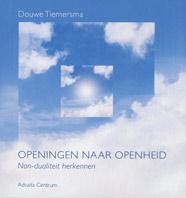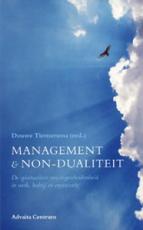8 - Trauma as a shattering of assumptions
Marloes de Jong
World Assumptions and Tibetan Buddhist Psychology. Trauma as a Shattering of Assumptions
[delen uit een eindscriptie]
Abstract
According to the World Assumptions Theory (Janoff-Bulman, 1992), assumptions on the world and the self shatter in case of trauma. In this thesis the World Assumptions theory is discussed and compared to the Tibetan Buddhist psychologist frame of reference. Key questions are which basic assumptions exist in Tibetan Buddhist psychology and wether, or in what form, these assumptions shatter in case of trauma. Though the two theories have very different backgrounds, comparison is possible on a psychological level.
Janoff-Bulman states that the basic assumptions people have on the benevolence of the world, meaning of the world and self-worth, are positively biased overgeneralisations. When trauma occurs, these are the assumptions that shatter. In contrast to this view, the Tibetan Buddhist view appears not to posses the same positive bias concerning their fundamental assumptions. Trauma takes place in a different cultural and assumptive context. The possible implications and consequences for trauma and coping are discussed and suggestions are made for further research.
Table of Contents
Preface.................................................... p. 7
Chapter 1: Introduction................................ p. 8
Chapter 2: World Assumptions Theory.................... p. 11
2.1 Fundamental Assumptions according to
Janoff-Bulman............................... p. 11
2.2 The Illusive Character of Assumptions and
Cognitive Conservatism...................... p. 14
2.3 World Assumptions, Trauma and Coping........ p. 17
2.3.1 Trauma as a Shattering of
Fundamental Assumptions........... p. 17
2.3.2 World Assumptions and Coping with
Trauma............................ p. 18
2.4 Conclusion and Discussion................... p. 21
Chapter 3: Tibetan Buddhist World Assumptions and
Trauma...................................... p. 23
3.1 Introduction to Tibetan Buddhism............ p. 23
3.2 Tibetan Buddhist World Assumptions.......... p. 23
3.2.1 Benevolence of the World: The
Four Noble Truths................. p. 24
3.2.2 Meaning of the World: Not why but
what is suffering?................ p. 26
3.2.3 Self-worth: Tibetan Buddhism and
the Self.......................... p. 27
3.3 Tibetan Buddhism, Trauma and Coping......... p. 29
3.4 Conclusion and Discussion................... p. 33
Chapter 4: World Assumptions and Tibetan Buddhist
Psychology: A Comparison.................... p. 35
4.1 Comparing two Culturally Different Views.... p. 36
4.2 World Assumptions and Tibetan Buddhist
Psychology.................................. p. 37
4.3 Trauma and Coping........................... p. 40
4.4 Conclusion and Discussion................... p. 44
Chapter 5: Conclusion and Discussion................... p. 47
5.1 The World Assumptions Theory, Tibetan
Buddhist Psychology and Trauma.............. p. 47
5.2 The World Assumptions Theory, Tibetan
Buddhist Psychology and Coping with Trauma.. p. 49
5.3 The World Assumptions Theory and Tibetan
Buddhist Psychology: Their Value in
Relationship to One Another................. p. 50
5.4 Suggestions for Further Research............ p. 51
Bibliography............................................... p. 53
Appendix: The World Assumptions Scale................. p. 57
Chapter 5: Conclusion and Discussion
In this chapter final conclusions are drawn and World Assumptions, Tibetan Buddhist psychology, their parallels and differences, and their additional value to each other are discussed. In their views on trauma and coping, the combination of World Assumptions and Tibetan Buddhist psychology can mean an enrichment in a deeper understanding of trauma, traumatic-stress responses and coping in a cross-cultural context.
Again, it is important to state that the World Assumptions theory and Tibetan Buddhist psychology found their roots and developed in areas that are geographically, historically and culturally far apart, and split by a period of almost two and a half thousand years. The World Assumptions theory, which is developed about a decade ago by Janoff-Bulman in America, is a cognitive psychological framework which describes the shattering of people’s assumptive worlds in case of trauma. Tibetan Buddhism finds it roots about 300 AD in the teachings of the Buddha, and has been developed and interpreted throughout the years by thousands of spiritual teachers. Besides a psychological framework, it includes philosophical, ethical and religious views on life and suffering. Although one should be conscious about these very different backgrounds, a comparison of the two on a psychological level has produced some interesting conclusions and points for discussion.
5.1 The World Assumptions Theory, Tibetan Buddhist Psychology and Trauma
The first general and most important conclusion is that the World Assumptions theory has proven to be a clear and valuable theory, but that it is not directly applicable to the non-western Tibetan Buddhist beliefs. Since basic assumptions appear not to be positively overgeneralised in the Tibetan Buddhist culture, trauma takes place in a different assumptive context. Then trauma might not directly be defined as the shattering of assumptions, as these assumptions are not falsified by trauma. It might even be so that trauma could mean a confirmation of what people believe in some of their culturally formed basic assumptions.
A parallel between the World Assumption theory and Tibetan Buddhist psychology concerning trauma is that they both assign an important role to cognitive assumptions. According to both frames of references these inner implicit schemes people have on the world and the self, play a part in how people experience and deal with trauma. The difference between the two frames of reference becomes clear in the content of these basic assumptions. Janoff-Bulman states that three basic assumptions shatter in case of trauma, namely the assumptions on benevolence of the world, meaning of the world and self-worth. In Tibetan Buddhist writings, these basic assumptions appear to have a different content than Janoff-Bulman proposes. The Tibetan Buddhist assumptions deal with the basic beliefs that suffering is all pervasive in life and one can find purpose in suffering as a means to eventually dissolve it. The first basic assumption about benevolence of the world can therefore not be interpreted in a dichotomous way of a ‘benevolent’ world or a ‘non-benevolent’ world, or something in between; the fact is that suffering is part of life. This starting point seems to be much more negative, or maybe realistic, than seeing the world as benevolent. Concerning the second assumption on meaning of the world, Tibetan Buddhism considers the world in itself as meaningless, but suffering does have purpose in coming closer to the ultimate reality of non-suffering. When trauma takes place, it immediately has this context of purpose, and is embedded by cultural and spiritual beliefs. The Tibetan Buddhist ideas about the third assumption on self-worth are difficult to explore, since ‘self-worth’ is not a theme that is written about in the way we take this term in the west. Buddhists seem to differentiate between the ‘self’ and the ‘ego’, in which the self is ‘the essence of all matter and energy of the universe’ and the ego is the grasping to and identifying with I-related energies. Tibetan Buddhism values the self and sees the ego as a source of suffering. One could expect that self-worth then is defined in terms of non-ego. Other cultural values might also play an important role, like servitude to others in a collective culture. It would be interesting to do research on how worthiness is defined in the Tibetan Buddhist culture and if, or in what way, trauma can result in decreasing self-worth.
Given the above how can the traumatic-stress responses be explained that were found among Tibetan refugees (Terheggen, 1997), when one can not directly speak of the shattering of assumptions in a Tibetan Buddhist frame of reference? First, it might be the case that some particular Tibetan Buddhist assumptions shatter in case of trauma while other assumptions are not directly threatened. Research is needed to see if the shattering of one assumption could result in the traumatisation of a person only on this particular area. Second, one can rationally assume basic cultural concepts and beliefs, while not fully realising them on an empirical level. Tibetan Buddhist beliefs about suffering and the truth of impermanence might be understood on a rational level, while trauma still can mean a shock in the sense of experiencing what one rationally knew. Third, and most obvious, is that trauma causes pain, no matter where you live in the world. If you get hurt, recovery can be marked by different kinds of responses. Traumatic-stress responses relate to the type of trauma that is experienced, and can vary from person to person and from culture to culture. In the next paragraph the subject of coping with trauma, in relation to World Assumptions and Tibetan Buddhist psychology, is discussed.
5.2 The World Assumptions Theory, Tibetan Buddhist Psychology and Coping with Trauma
The difference between the World Assumptions Theory and Tibetan Buddhist psychology on fundamental assumptions and therefore the difference in viewing trauma, also has its impact on the perspective on coping with trauma. There are notable similarities in coping techniques developed by Buddhists and recent cognitive-behavioural techniques. In this thesis (paragraph 3.3) the control of intrusive thoughts by distraction, switching or stopping, incompatible thoughts, and prolonged exposure, is taken as an example to show the similarities with cognitive-behavioural coping-strategies. Though there are parallels in coping techniques, there are differences between the theory of Janoff-Bulman and Tibetan Buddhist psychology as well. The main difference in the view on coping is that Janoff-Bulman sees the coping process as the rebuilding of a new assumptive world, while Tibetan Buddhist psychology takes as highest goal to see through the illusive assumptions which are the cause of suffering. A second difference concerns two coping factors that have proven to be important in successful coping with trauma (Kleber, 1992): meaning and control. The purpose of suffering that is provided by Tibetan Buddhism places the coping-process directly in a meaningful context in Buddhist perspective. A collectively carried, spiritually embedded sense of meaning is different from the individual search for meaning as described by Janoff-Bulman. This collective and spiritual sense of purpose in Tibetan Buddhist society could have a positive influence on coping with trauma. Control, which is also seen as a main determinant in successful coping, seems to be of less importance in Tibetan Buddhist psychology, since their believe in ‘karma’. ‘Karma’ is defined as the law of cause and effect that stretches over lives. On a certain level one can take personal control, but on the whole it is this ‘karma’-law that is the logic behind things that occur. A third difference between the two frames of reference is the view on adaptability of illusions on coping and well-being in general. As western surveys have shown that positively biased assumptions have long-term benefits for coping with trauma (Janoff-Bulman,1992), the Tibetan Buddhist view illusive assumptions as a source for suffering. Their ultimate goal is to take suffering out by the root, to see through all illusions and accept reality as it is. Finally, it is interesting to see that in western therapies coping with trauma is generally stimulated with ego-strengthening techniques, while in the Tibetan Buddhist psychology ego-weakening is important to learn to deal with suffering.
5.3 The World Assumptions Theory and Tibetan Buddhist Psychology: Their Value in Relationship to One Another
Considering the given information about the two perspectives and their view on trauma and coping, what is their reciprocal value? On the one hand the World Assumptions theory could cross-culturally make people conscious about their implicit values and beliefs. Consciousness is of great value in the Tibetan culture, for unconsciousness is viewed as an important source for suffering. This consciousness of implicit assumptions could give rise to the realisation that eventually all believes and values are just concepts, even the Buddhist theories. On the other hand Tibetan Buddhist teachings can have value in viewing trauma and coping from another perspective. The quest for the source of suffering and the uprooting of it, could be of importance in any culture. When considered especially in relation to Janoff-Bulman’s World Assumptions Theory, Tibetan Buddhism has an extra value in stressing the impermanence of worldly things. The suggestion is made in this thesis to add an extra assumption to the three basic one’s that Janoff-Bulman proposes; namely ‘the permanence of the world and the self’. It could be the case that this assumption is also positively overgeneralised: people might implicitly believe that they themselves and worldly things are permanent and thus in a sense invulnerable. Then loss, illness or destruction can mean a great shock, since this inner assumption on permanence is threatened or falsified. A final point of reciprocal value is the coping techniques. In this thesis only the problem of intrusive thoughts, a post-traumatic stress reaction, has been studied in a more extensive way. A closer study of other Buddhist techniques and cognitive-behavioural techniques, could yield interesting results and possibilities for the integration of the two.
5.4 Suggestions for Further Research
The value of comparing two different perspectives on a psychological level, means at the same time the difficulty: these perspectives are sometimes so different, that the same concepts (like the ‘self’) have different meanings. The different levels of the perspectives made the narrowing of the Buddhist views to a psychological level necessary, though the spiritual background appeared so pervasive that often a short explanation of the more philosophical or existential level was needed in order to clarify psychological views. Even within the perspectives themselves, words and concepts can be understood in several ways. To fully understand what is meant, a theoretical discussion has its shortcomings. In Tibetan Buddhism, concepts like ‘emptiness’ or ‘Buddhahood’ are very difficult to translate in words, especially in psychological terms. Further qualitative research could deeper explore the meaning of these kind of concepts at the psychological level.
What do the theoretical conclusions drawn in this thesis mean for the practical day to day life of Tibetan Buddhists? How do they view trauma? Is there a difference between laymen and spiritual people, like monks and nuns? Are they really able to use suffering as a practise for eventual non-suffering? What are their most important coping factors? What kind of empirical assumptions do they have? What are the differences between theory and practise, between cognitions and reality? Do people feel basic assumptions are shattered in case of trauma? These are all questions that concern the practical processes and consequences of what is described in this essay. It would be interesting to do field research on the implications of the suggested different world assumptions and their influence on trauma and coping.
Janoff-Bulman developed a questionnaire to measure people’s assumptions on benevolence of the world, meaning of the world and self-worth. Concluding from this thesis, this World Assumptions Scale (see the Appendix) can not directly be applied to the non-western Tibetan culture, or maybe even not to Buddhist cultures in general. The questions are written in a western manner that does not apply to the Tibetan way of perceiving the world and the self. The questionnaire should be rewritten and tested to see if it could be of use in a non-western society like the Tibetan Buddhist culture. The question remains if these most fundamental assumptions and theories can be measured with any person in any culture, for they are mostly implicit and unconscious. For (psychologically) unschooled people or people from cultures that are not used to this way of abstract-thinking, it can be hard to analyse oneself on such an abstract level. The World Assumptive Scale at present could be of use as preliminary research in cross-cultural context, when the content of the questions is discussed with local people to see how basic assumptions are to be interpreted in the specific culture. Then the World Assumption Scale can be adapted according to the derived information and eventually used to do more extensive quantitative research within the culture. For the Tibetan Buddhist culture this could be a field research among Tibetan Buddhists to further explore Tibetan Buddhist World Assumptions and their influence on trauma and coping in day-to-day life.
Er is geen tweeheid
als je ontspannen bent
in zelf-bewustzijn
is dat duidelijk.
Boeken
Douwe schreef en redigeerde gedurende zijn leven boeken. Via onze uitgeverij zijn deze nog verkrijgbaar.



